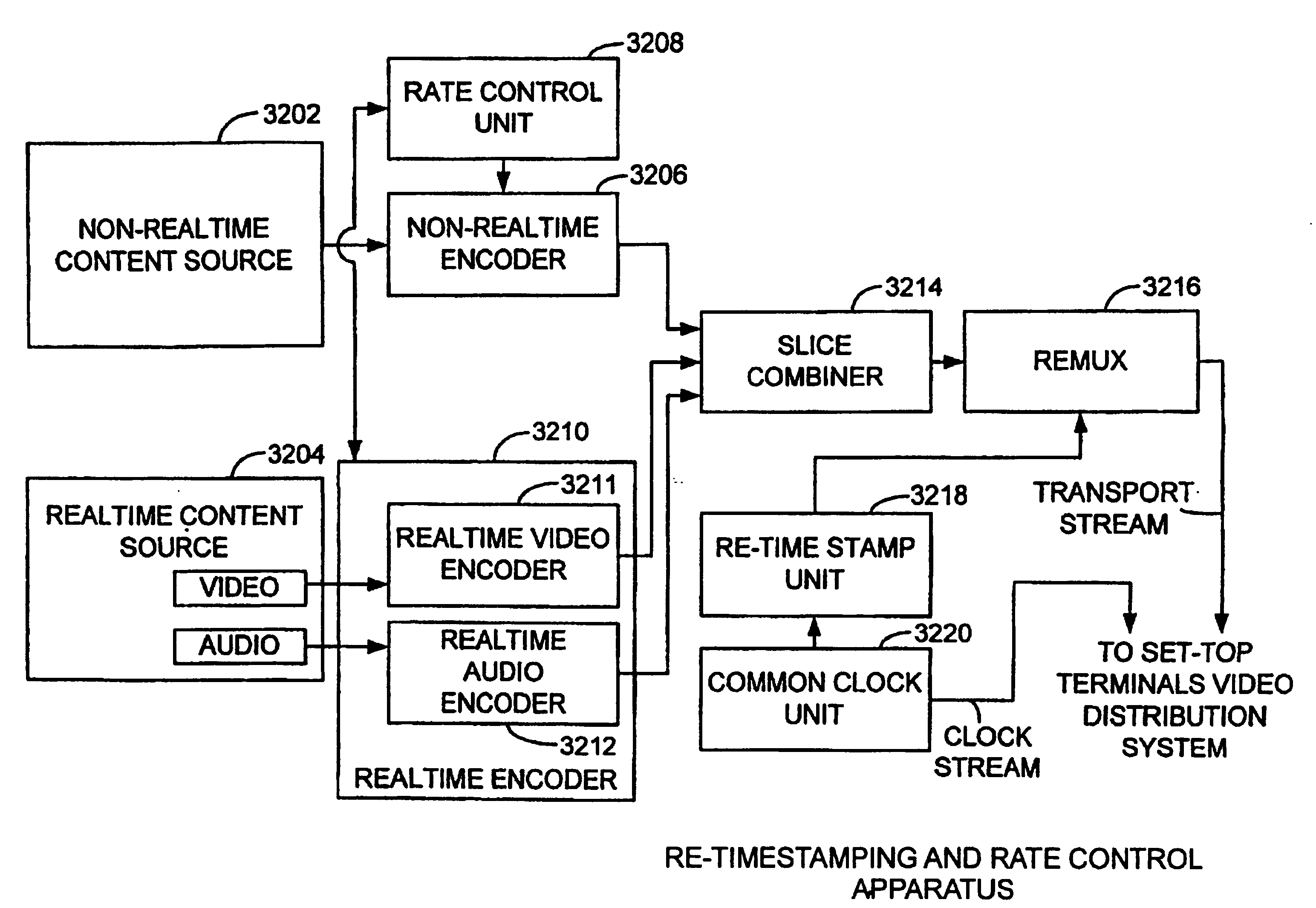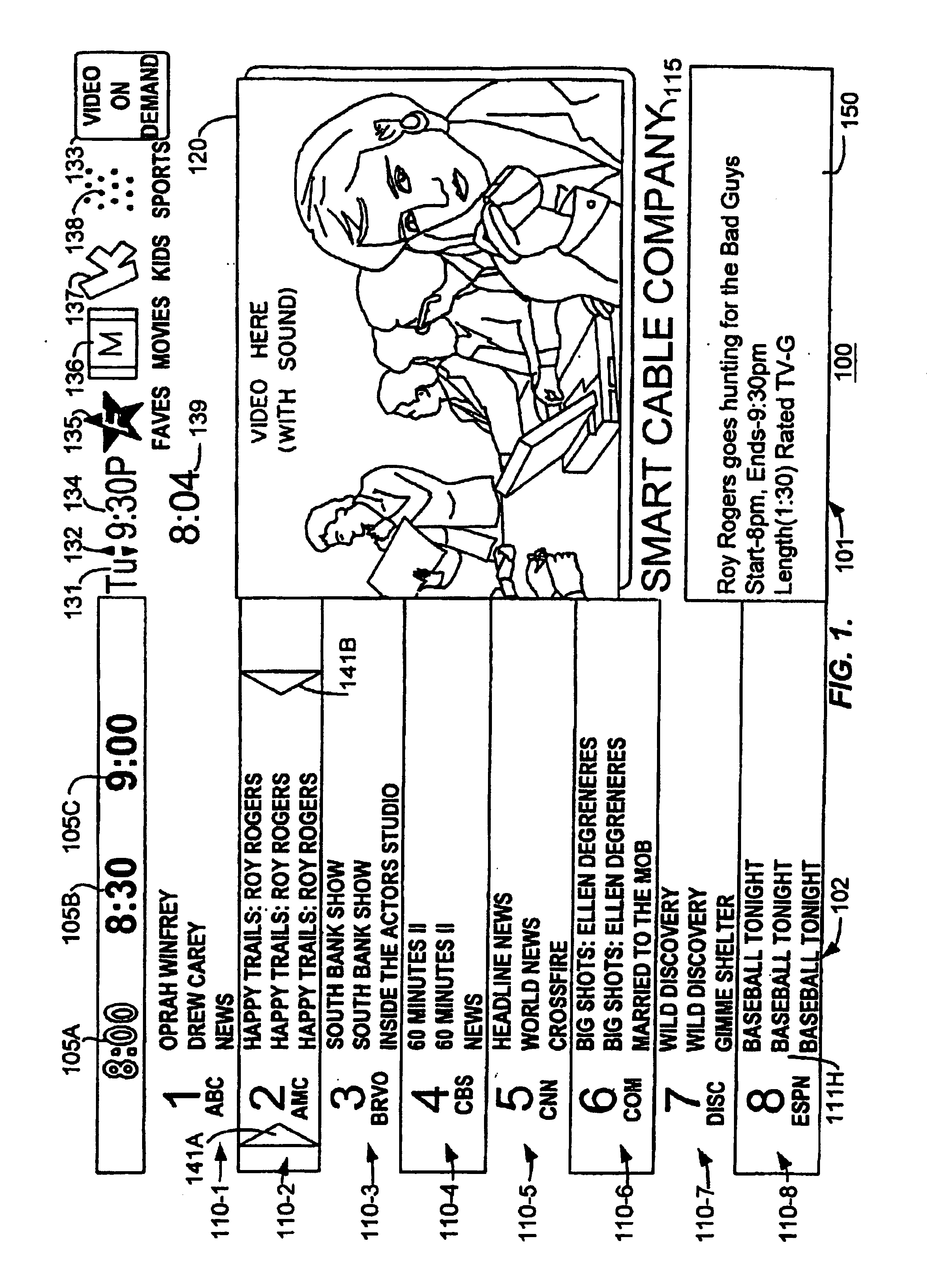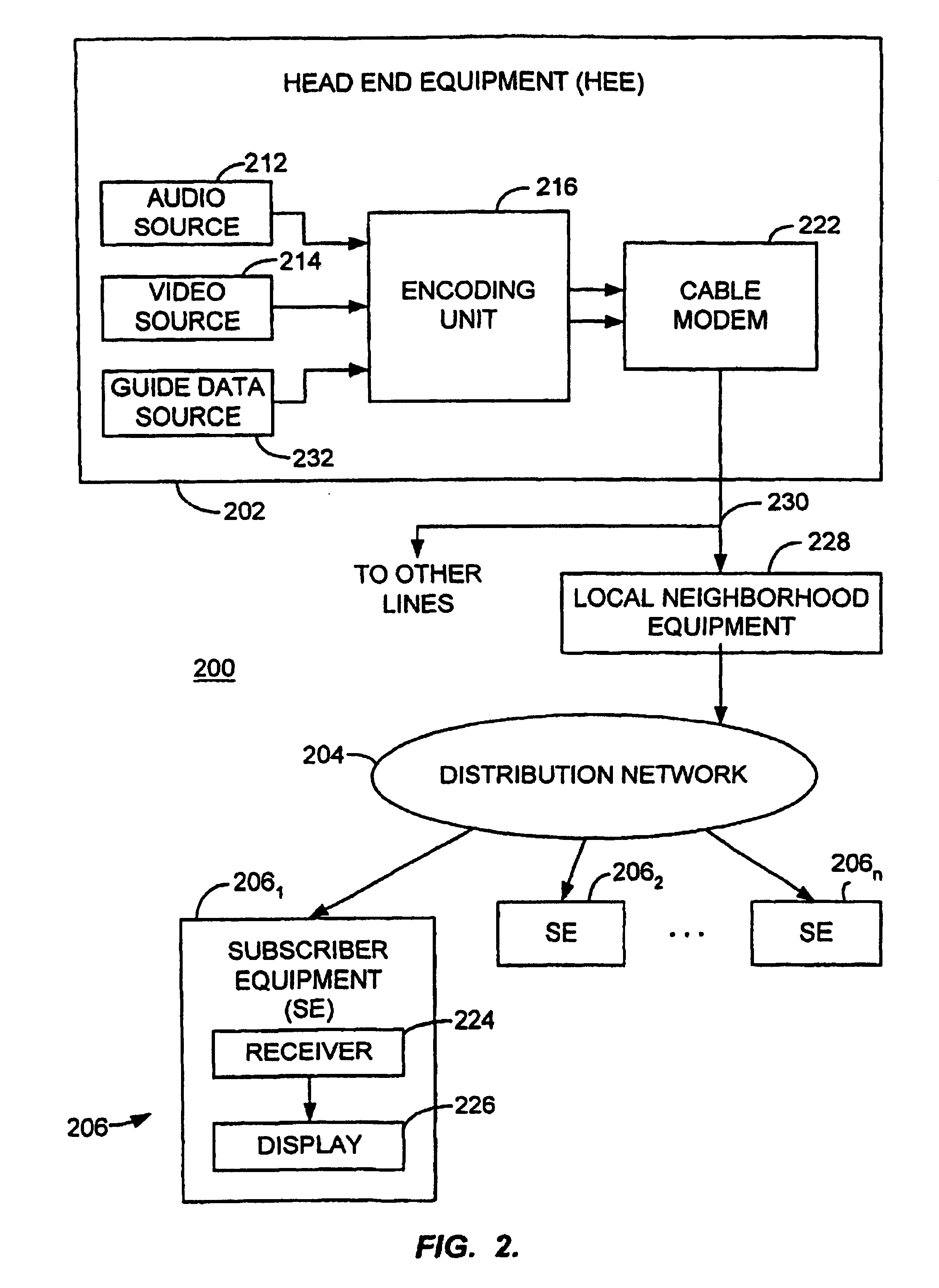Apparatus and method for combining realtime and non-realtime encoded content
a technology of real-time and non-real-time encoded content, applied in the field of multi-functional user interface, can solve the problems of slow acquisition of the current database of programming information of the program guide, out-of-date database information,
- Summary
- Abstract
- Description
- Claims
- Application Information
AI Technical Summary
Benefits of technology
Problems solved by technology
Method used
Image
Examples
Embodiment Construction
[0048]This invention is a system for generating, distributing and receiving a transport stream containing compressed video and graphics information. The invention is illustratively used to encode a plurality of interactive program guides (IPGs) that enable a user to interactively review, preview and select programming for a television system.
[0049]The invention uses compression techniques to reduce the amount of data to be transmitted and increase the speed of transmitting program guide information. As such, the data to be transmitted is compressed so that the available transmission bandwidth is used more efficiently. To transmit an IPG having both graphics and video, the invention separately encodes the graphics from the video such that the encoder associated with each portion of the IPG can be optimized to best encode the associated portion. The invention illustratively uses a slice-based, predictive encoding process that is based upon the Moving Pictures Experts Group (MPEG) stan...
PUM
 Login to View More
Login to View More Abstract
Description
Claims
Application Information
 Login to View More
Login to View More - R&D
- Intellectual Property
- Life Sciences
- Materials
- Tech Scout
- Unparalleled Data Quality
- Higher Quality Content
- 60% Fewer Hallucinations
Browse by: Latest US Patents, China's latest patents, Technical Efficacy Thesaurus, Application Domain, Technology Topic, Popular Technical Reports.
© 2025 PatSnap. All rights reserved.Legal|Privacy policy|Modern Slavery Act Transparency Statement|Sitemap|About US| Contact US: help@patsnap.com



